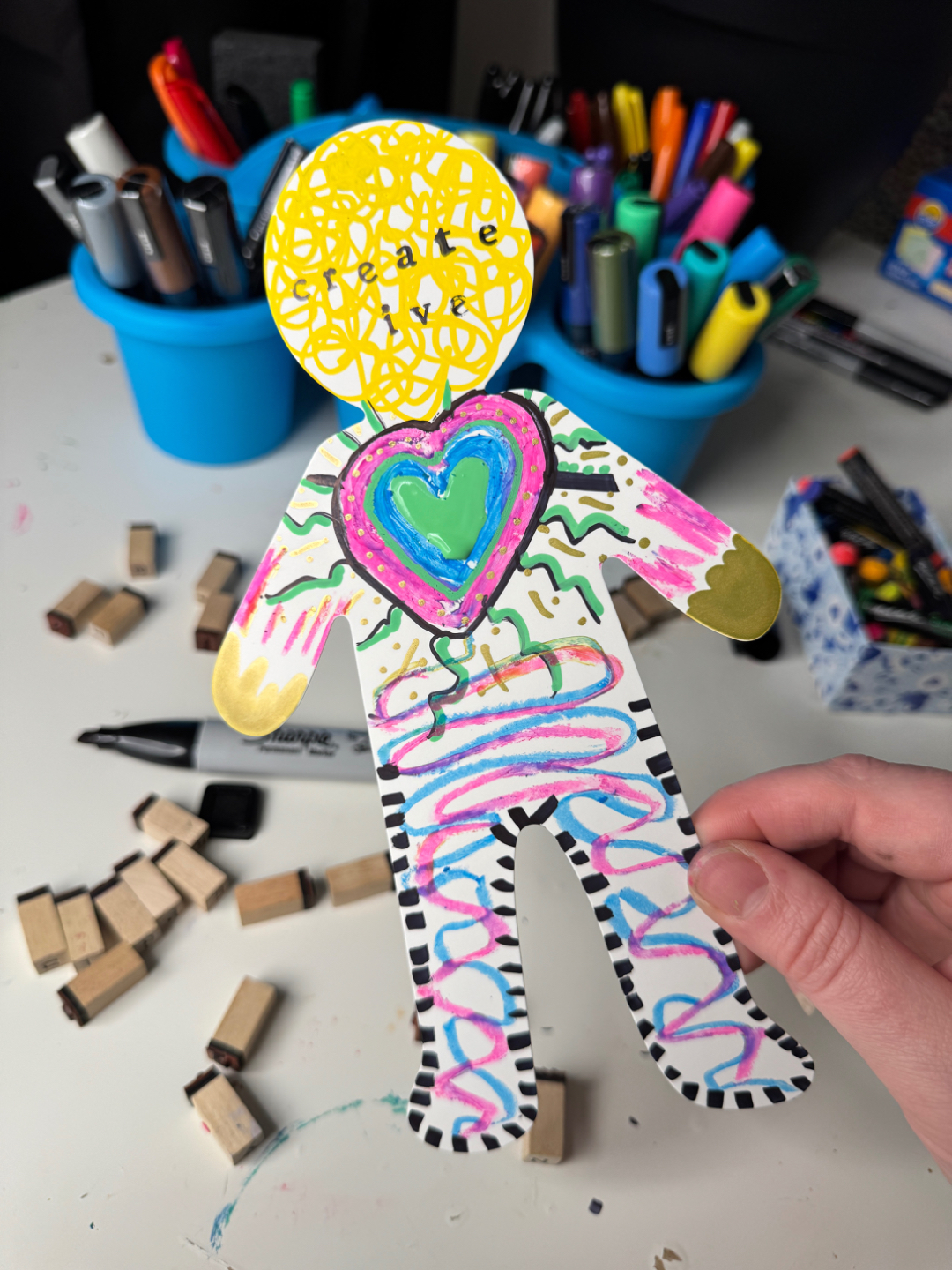Art therapy is more than just making art—
What is Art Therapy?
it’s a supported process of self expression, meaningFUL reflection, and deep embodied healing.
At its core, art therapy is a form of psychotherapy that uses creative techniques to help people explore emotions, reduce stress, process experiences, and connect with themselves on a deeper level. Guided by a professionally trained art therapist, it invites you to express what words sometimes can’t.


Art therapy offers a space to
slow down and listen inward.
Creating art can help regulate the nervous system, increase self-awareness, and allow for symbolic insight—sometimes revealing things we weren’t consciously aware of. Neuroscience shows that the act of making art can lower cortisol levels and activate reward pathways in the brain, helping people manage stress, anxiety, trauma, grief, and more (Kaimal et al., 2016).
In art therapy, you're not just "doing crafts"—you're engaging in deeply self reflective practise that supports wellbeing from the inside out.
Art therapy isn't about being "good" at art. It's about using creativity to connect, reflect, and process in a way that feels safe and authentic. The focus is on the process, not the product.
art therapy is not "arts and crafts"
Art therapy is often misunderstood as just “arts and crafts”—but it’s much deeper than that.
This isn’t about being artistic or making a polished final piece. It’s about using art as a way to explore what’s going on inside—emotionally, mentally, sometimes even physically.
In art therapy, it's the process and what we feel while we are making that matters more than the final product or it's 'beauty.'




The Magic of the Materials
Different art materials bring out different feelings.
There’s something about the texture of chalk, the flow of paint, the resistance of clay… it all taps into something deeper.
Sometimes your hands know what you need before your mind does. In art therapy, we use these materials in an intentional way—not just to create something, but to feel through it. The material becomes part of the message.
Doing Art on Your Own vs. With an Art Therapist
Making art on your own can absolutely be therapeutic!
But working with a trained art therapist brings something different to the table. It’s a safe space where you're supported, guided, and witnessed—without judgment. A therapist can help you go deeper, notice patterns, and hold space for things that might be hard to face alone. You’re still in charge of the process, but you’re not doing it all by yourself.
Therapist designed prompts are also great!



Who Is Art Therapy For?
Short answer?
Pretty much anyone.
You don’t have to be “creative.”
You don’t have to know "how to draw."
& You don't need fancy materials!
If you’re feeling overwhelmed, stuck, curious, emotional, burnt out—or just want to reconnect with yourself—art therapy can be a way in. It supports people of all ages and backgrounds, and the experience is always shaped around you.
Your pace, your process, your story.

Making Art Therapy Accessible Online
Here at Discover Art Therapy, we’re all about making art therapy accessible in ways that actually work for real life. Whether you’re exploring at-your-own-pace prompts or guides, joining a live therapeutic art workshop, or diving into our creative memberships, there’s space for you here.
Everything we offer is rooted in positive psychology, neuroscience-informed, and designed to support real personal growth—while also making it fun to reconnect with your creativity as a tool for self-expression!











